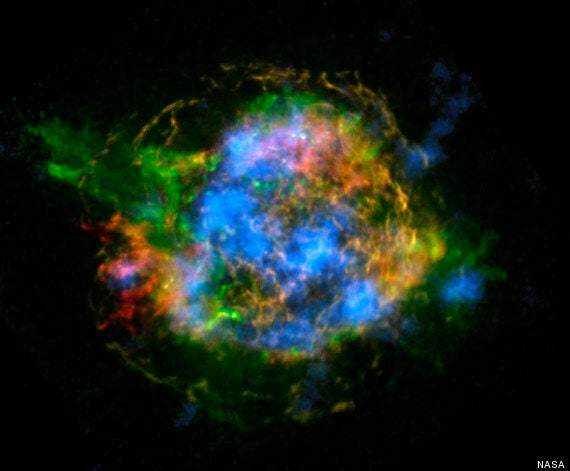Nasa has produced the first ever 'map' of a supernova.
The remarkable X-ray picture taken by the Nuclear Spectroscopic Telescope Array (NuStar) is the first map of radioactivity in a supernova remnant.
Supernovas generally occur when stars run out of fuel to burn and collapse in on themselves, before exploding in an enormously powerful burst of light seen across the galaxy. They are the sole way that many elements including gold, calcium and iron can be created - and in a sense are the true 'seeds' of life as we know it.
But the process of how those shock waves tear apart dying stars is still mysterious - partly because it's difficult to predict when a supernova will occur (or rather appear to occur from our position on Earth).
Now Nasa has been able to map the remnants of Cassiopeia A, a supernova which reached Earth a few hundred years ago.

Above: This is the first map of radioactivity in a supernova remnant.
"Stars are spherical balls of gas, and so you might think that when they end their lives and explode, that explosion would look like a uniform ball expanding out with great power," said Fiona Harrison, the principal investigator of NuStar.
"Our new results show how the explosion's heart, or engine, is distorted, possibly because the inner regions literally slosh around before detonating."
The maps shows how elements are created and placed in the remnant of a supernova, including clumps of titanium in certain areas of the cloud.